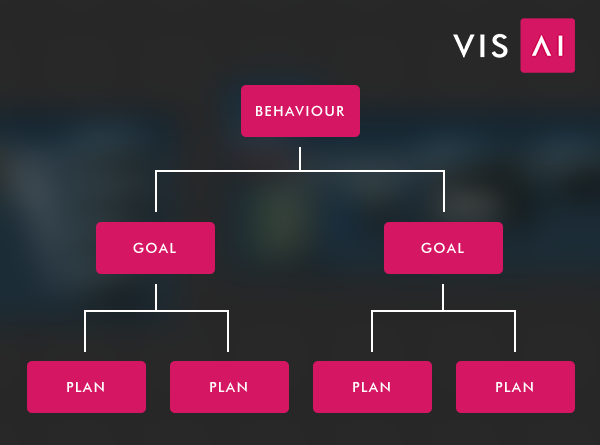
VisAI uses a structure that’s designed to work with virtually any AI type, and provides a straightforward and comprehensible way to design your AI. Entire AI designs can be built easily, even by those without any AI experience. You’ll use a structure of Behaviours, Goals, and Plans to design your AI.
Behaviours are what the AI is, or does. As an example, an AI Behaviour could be “Cook”, “Ranged Enemy”, or something else that fits your game better. When creating Behaviours, ask yourself “What defines the AI as a whole?”
Behaviour allow you to change large parts of how your AI functions at runtime with minimal overhead. It also allows you to organize AI functionality into comprehsive “boxes”
Goals define what the AI wants. As an example, an AI might want to Find Enemies, Purchase a house when it has enough money, Cook a Meal, or anything else you can conceptualize. When creating Goals, ask yourself “What does this AI want or need?”
Goals allow you to give your AI a scope within the game environment. Something to put their focus on.
Plans define how the AI could get what it wants, general requirements of the goal, or just different ways to achieve a goal. As an example, a Ranged AI might have plans such as “Tactical Attack” or “Simple Attack”, where a Cook AI might have the plans “Gather Ingredients” or “Cook Ingredients”.
Plans can be used in any way that makes sense for your AI and it’s Behaviours/Goals. You’ll find more and better ways to use plans as you create with the framework.
Regardless of the type of AI you’re building, the structure ends up looking something like this:

You can use a tool such as SimpleMind to create entire AI designs with this structure. Once you’ve decided on your Behaviour structure, you can move onto Decisions.

Let’s move onto designing Decisions!